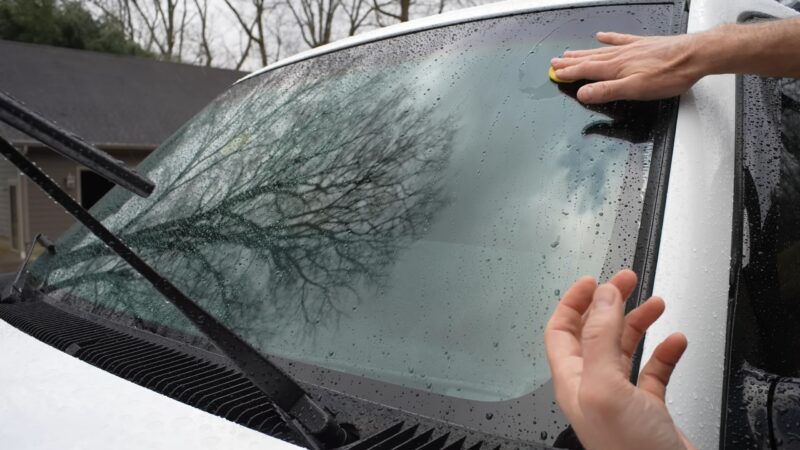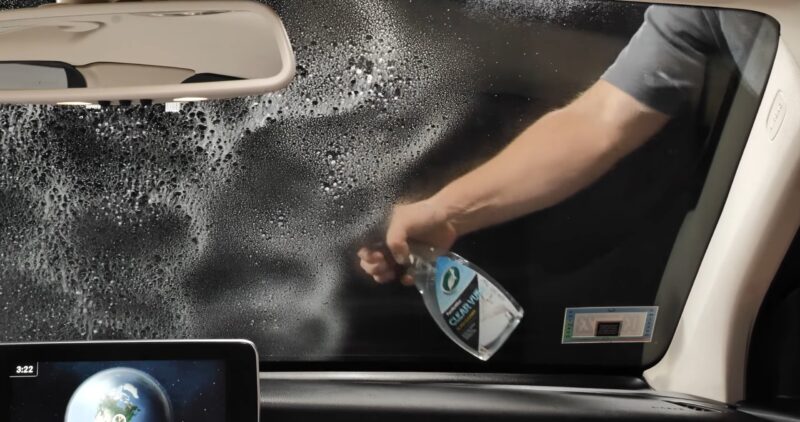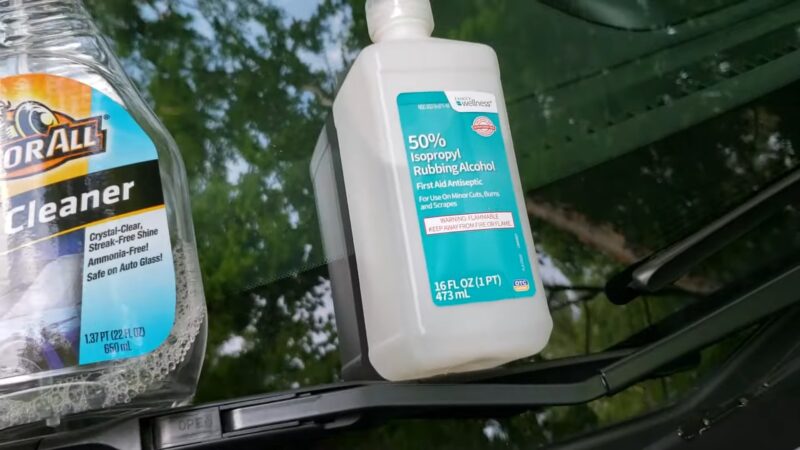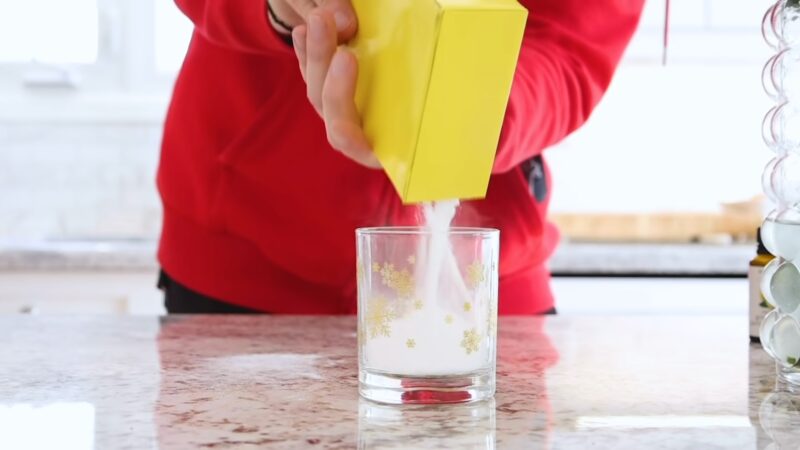Let’s face it. Your car’s windshield is more than just a pane of glass; it’s your window to the world. A foggy, dirty, or hazy windshield doesn’t just spoil your view—it can be downright dangerous. You’re probably here because you’ve tried wiping your windshield with your wipers or hand, only to find the haze returning in a few hours or even minutes.
But fear not! Removing windshield haze isn’t as complicated as you might think. In this guide, we’ll talk about the art of achieving a crystal-clear windshield. We’ve curated nine powerful methods for removing that bothersome haze.
From DIY concoctions to professional-grade products, we’ve got you covered. Whether you’re a motorhead or a beginner, a busy parent, or a corporate executive, there’s a method here for everyone. So fasten your seatbelt and get ready to clear up your view!
1. Regular Windshield Washing—A Clean Routine

First on our list is the simplest and most straightforward method—regular windshield washing. Yes, it’s essential, and yes, you should not ignore it. A bucket, some car-friendly soap, and a sponge can go a long way in keeping your windshield haze-free.
Why It Works
- Frequent Washing: Regular washing prevents the buildup of dust, grime, and oils that can lead to haze formation.
- No Special Tools Needed: All you need is already probably in your garage or under your sink.
The Right Way To Do It
- Fill a bucket with warm water and add a few squirts of car-friendly soap.
- Use a sponge to scrub the windshield, working in a circular motion.
- Rinse thoroughly with clean water, ensuring no soap residue remains.
- Dry the windshield with a microfiber towel for a streak-free finish.
2. Glass Cleaners—Spray, Wipe, and Drive!

It’s always a good idea to have a glass cleaner designed for automotive purposes in your car maintenance toolkit. They’re formulated specifically to deal with the kinds of grime and oils your car encounters.
The Right Product Matters
- Ammonia-Free: Always go for an ammonia-free formula; ammonia can damage the tint on your windshield.
- Streak-Free: Opt for cleaners promising a streak-free finish.
How to Use a Glass Cleaner Effectively
- Spray the cleaner generously onto the windshield.
- Use a microfiber cloth to wipe the cleaner, moving either in circles or straight lines to avoid streaks.
- Wipe away any remaining cleaner with a dry cloth.
3. White Vinegar—The Eco-Friendly Warrior
If you’re environmentally conscious or just prefer natural solutions, white vinegar is your go-to option. It’s not just for salads; vinegar can break down the oils and grime that cause windshield haze.
Benefits
- Eco-Friendly: Vinegar is biodegradable and non-toxic.
- Economical: It’s cheaper than most commercial glass cleaners.
The Vinegar Technique
- Mix equal parts of white vinegar and water in a spray bottle.
- Spray the mixture onto the windshield.
- Use a microfiber cloth to wipe it off, employing the same technique as you would with a commercial glass cleaner.
4. Rubbing Alcohol—For Stubborn Haze

For that stubborn haze that just won’t go away, consider using rubbing alcohol. It’s a stronger solvent than vinegar and can remove tougher stains and oils.
Pros and Cons
- Pros: Highly effective, cheap, readily available.
- Cons: Can be too strong for some surfaces, so use it cautiously.
The Rubbing Alcohol Regime
- Dip a cloth in rubbing alcohol and gently scrub the windshield.
- Wipe the area clean with a separate cloth.
- Rinse with water to remove any residue.
5. Magic Erasers: Not Just For Walls
Magic Erasers are made of melamine foam, which acts like extremely fine sandpaper. This can help in removing those hard-to-shift spots that contribute to haze.
Why It’s A Good Choice
- Effective: Good for removing stubborn spots.
- Easy to Use: Just wet, squeeze and wipe.
How to Use a Magic Eraser
- Wet the Magic Eraser and squeeze out the excess water.
- Gently scrub the hazy spots on your windshield.
- Wipe clean with a microfiber cloth.
6. Clay Bars—The Detailer’s Secret
Clay bars are typically used for removing contaminants from your car’s paint but are equally effective on glass.
Benefits
- Thorough: Provides deep cleaning.
- Professional Finish: Offers a smooth, haze-free finish.
The Clay Bar Process
- Lubricate the windshield with a detailing spray.
- Gently glide the clay bar over the surface.
- Wipe clean and admire the clarity!
7. Professional Windshield Treatments
If you’ve tried all of the above and still can’t get rid of the haze, it might be time to seek professional help.
Options
- Windshield Polishing: A mechanical polisher removes the outer layer of the glass, taking the haze with it.
- Nano Coating: Provides a protective layer over your windshield, reducing future haze formation.
The Process
- Book an appointment with a reputable car detailing service.
- Choose the treatment that’s right for you.
- Sit back and let the professionals work their magic.
8. Toothpaste Scrub—A Minty Fresh Approach
It’s not just for teeth; toothpaste has mild abrasive properties that can remove minor haze effectively from your windshield. And bonus: your car may just smell minty fresh afterward.
Why Toothpaste Works
- Abrasiveness: The texture of toothpaste can be cleaned without scratching the glass.
- Accessibility: You probably already have some in your bathroom cabinet, making it an immediate go-to solution.
The Toothpaste Technique
- Apply a blob of toothpaste onto a microfiber cloth.
- Scrub the windshield using circular motions, applying moderate pressure.
- Rinse the windshield thoroughly with water and then dry it with a clean towel.
9. Baking Soda—The Pantry Powerhouse

You might associate baking soda more with cookies or cleaning your kitchen sink, but it can be a windshield wonder too. Just like toothpaste, baking soda has natural abrasive qualities that help remove haze.
Advantages
- Eco-friendly: Like vinegar, baking soda is biodegradable and non-toxic.
- Cheap and Available: Most households already have this pantry staple, so you can take immediate action against the haze.
The Baking Soda Solution
- Mix a couple of tablespoons of baking soda with water to make a thick paste.
- Apply the paste onto the windshield using a cloth, and scrub gently in circular motions.
- Rinse off the paste completely with water and wipe down the windshield with a clean towel.
FAQs
How often should I clean my windshield to prevent haze?
While the frequency can depend on various factors like your local climate, the amount you drive, and the type of roads you frequent, a good rule of thumb is to clean your windshield at least once every two weeks. More frequent cleaning may be necessary if you drive on dirt roads or in areas with heavy pollution.
Can I use household window cleaners on my car windshield?
While household window cleaners may work to an extent, it’s better to use cleaners specifically designed for automotive use.
Many household cleaners contain ammonia, which can damage car window tints and may not be as effective in removing automotive-specific grime and oils.
Is it safe to use abrasive materials like steel wool on my windshield?
It’s generally not recommended to use highly abrasive materials like steel wool on your windshield. These can create tiny scratches on the glass surface, which can make haze even worse over time and could compromise the integrity of the windshield.
Can temperature affect windshield haze?
Yes, temperature can indeed affect windshield haze. Cold weather can lead to condensation, while hot weather can cause oily residues to evaporate and adhere to the windshield. Changing temperatures can exacerbate existing haze issues, making regular cleaning all the more important.
What should I do if I notice haze forming on the inside of the windshield?
Haze can form on the inside of the windshield due to off-gassing from the car’s interior components or from other contaminants like cigarette smoke.
The cleaning methods mentioned can often be safely applied to the interior side of the windshield. However, be extra cautious with strong solvents like rubbing alcohol, as they may affect the car’s interior materials.
Will using the car’s defrost setting help remove windshield haze?
Using the defrost setting can help temporarily by clearing condensation, but it won’t remove the root cause of the haze, such as grime or oily residues. For a more permanent solution, a thorough cleaning using one of the methods listed in this guide is recommended.
Final Words
There you have it! Nine tested and proven ways to remove windshield haze and bring back that showroom shine to your car’s window to the world. Whether you’re driving to work, cruising on the highway, or embarking on a cross-country road trip, a clear windshield makes for a safer and more enjoyable journey.
